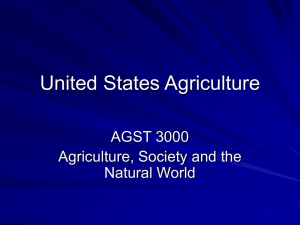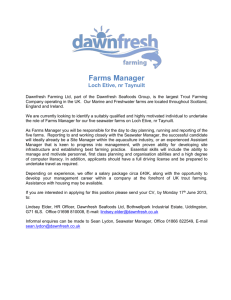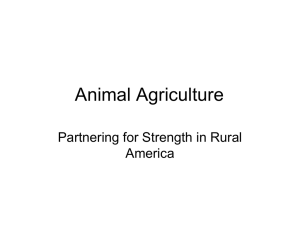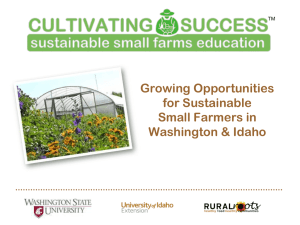Since deforestation is a factor we first investigated land cover that
advertisement
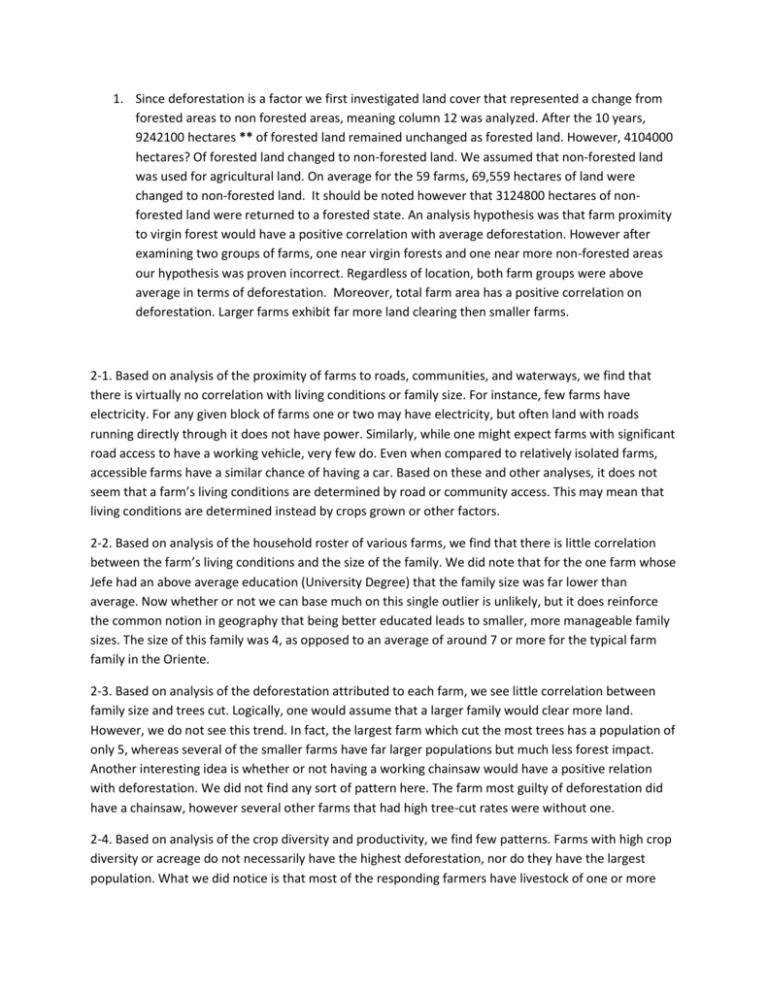
1. Since deforestation is a factor we first investigated land cover that represented a change from forested areas to non forested areas, meaning column 12 was analyzed. After the 10 years, 9242100 hectares ** of forested land remained unchanged as forested land. However, 4104000 hectares? Of forested land changed to non-forested land. We assumed that non-forested land was used for agricultural land. On average for the 59 farms, 69,559 hectares of land were changed to non-forested land. It should be noted however that 3124800 hectares of nonforested land were returned to a forested state. An analysis hypothesis was that farm proximity to virgin forest would have a positive correlation with average deforestation. However after examining two groups of farms, one near virgin forests and one near more non-forested areas our hypothesis was proven incorrect. Regardless of location, both farm groups were above average in terms of deforestation. Moreover, total farm area has a positive correlation on deforestation. Larger farms exhibit far more land clearing then smaller farms. 2-1. Based on analysis of the proximity of farms to roads, communities, and waterways, we find that there is virtually no correlation with living conditions or family size. For instance, few farms have electricity. For any given block of farms one or two may have electricity, but often land with roads running directly through it does not have power. Similarly, while one might expect farms with significant road access to have a working vehicle, very few do. Even when compared to relatively isolated farms, accessible farms have a similar chance of having a car. Based on these and other analyses, it does not seem that a farm’s living conditions are determined by road or community access. This may mean that living conditions are determined instead by crops grown or other factors. 2-2. Based on analysis of the household roster of various farms, we find that there is little correlation between the farm’s living conditions and the size of the family. We did note that for the one farm whose Jefe had an above average education (University Degree) that the family size was far lower than average. Now whether or not we can base much on this single outlier is unlikely, but it does reinforce the common notion in geography that being better educated leads to smaller, more manageable family sizes. The size of this family was 4, as opposed to an average of around 7 or more for the typical farm family in the Oriente. 2-3. Based on analysis of the deforestation attributed to each farm, we see little correlation between family size and trees cut. Logically, one would assume that a larger family would clear more land. However, we do not see this trend. In fact, the largest farm which cut the most trees has a population of only 5, whereas several of the smaller farms have far larger populations but much less forest impact. Another interesting idea is whether or not having a working chainsaw would have a positive relation with deforestation. We did not find any sort of pattern here. The farm most guilty of deforestation did have a chainsaw, however several other farms that had high tree-cut rates were without one. 2-4. Based on analysis of the crop diversity and productivity, we find few patterns. Farms with high crop diversity or acreage do not necessarily have the highest deforestation, nor do they have the largest population. What we did notice is that most of the responding farmers have livestock of one or more varieties. The problem is that the data does not include a measure of quantity for said livestock and therefore we cannot make any sort of valuable inferences about the effects of said animals. Most farms with significant crop productivity or quantity used or hired contract labor during the year of the survey. Again, we see no data corresponding to the number of workers, however these employment statistics make sense of the fact that some of the smallest farms have the highest crop output. Conclusions: This lab has made it abundantly clear that the quality of the maps and analysis can only go so far as the quality of the data allows. While the maps and some of the basic socio-economic data are useful in determining the environmental impact of farms on the Oriente area, other parts of the Jefe/Esposa survey were relatively useless. In a large proportion of the response categories, no answer was recorded. Also, for many answers, in compatible values were recorded, effectively destroying the usability of the data. We find fault with either the survey administer or perhaps the survey methods. Time spent collecting ineffective data is wasted. Also, with such data it is very difficult to take our analysis to a meaningful level. With so many of the responses being returned as “.9999”, we can not take our investigations beyond the merely superficial level.




